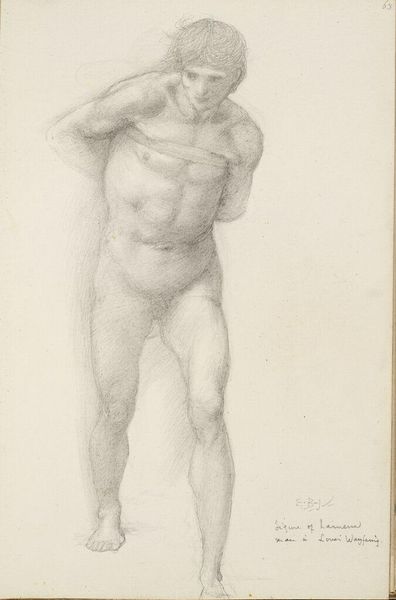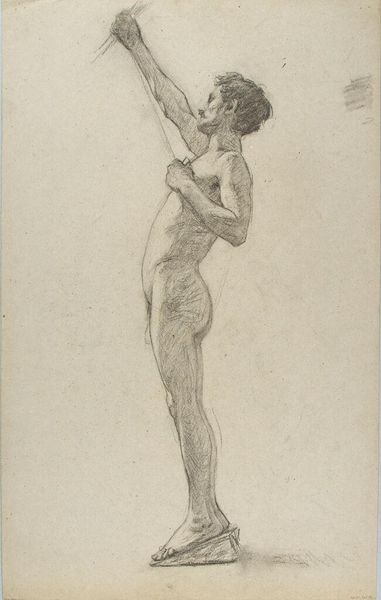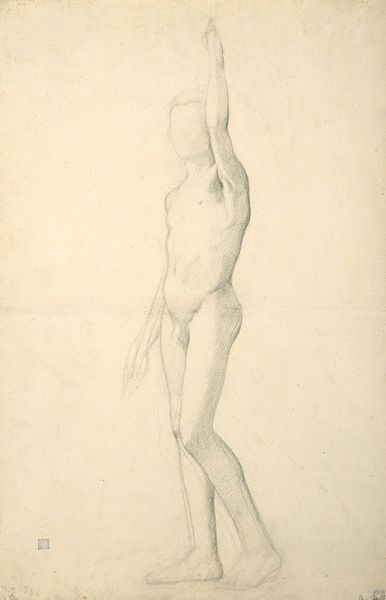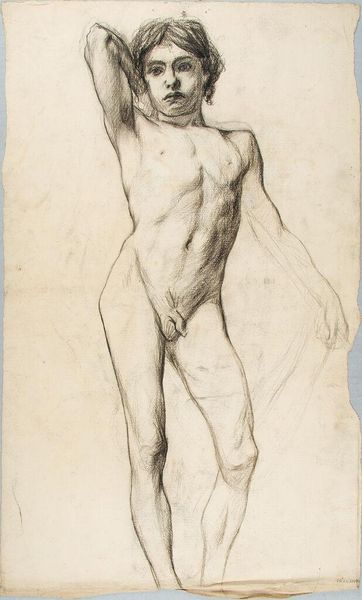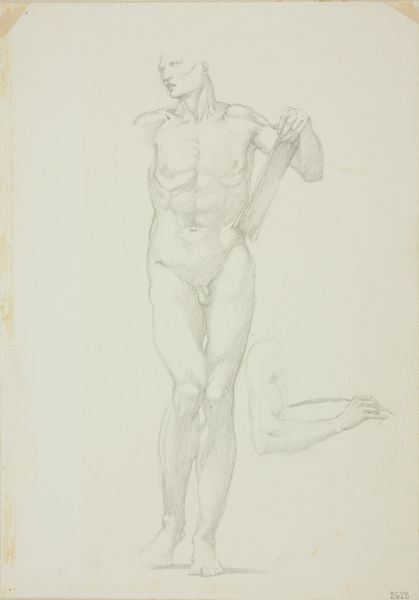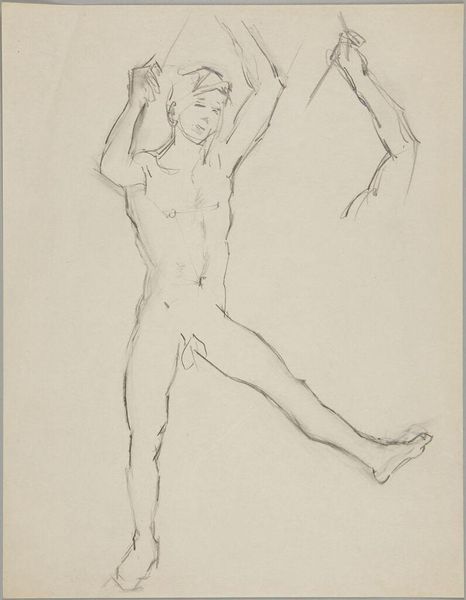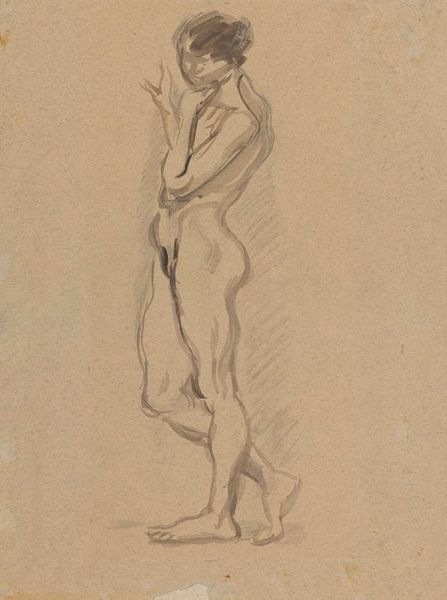
Figure of Perseus, for "The Finding of Medusa"; verso: blank c. 1882
0:00
0:00
Dimensions: 27.2 x 181 cm (10 11/16 x 71 1/4 in.)
Copyright: CC0 1.0
Curator: Before us is a study by Edward Burne-Jones, a pencil drawing titled "Figure of Perseus, for 'The Finding of Medusa.'" Editor: He’s so poised, almost balletic, yet there’s a tension in his stance, a readiness for action. Curator: Exactly. Burne-Jones often imbued his figures with a sense of melancholy and introspection, drawing from classical and medieval imagery. Perseus, of course, is a pivotal heroic figure. Editor: And the male gaze becomes quite literal here. Perseus averts his eyes to avoid Medusa’s petrifying stare, a powerful metaphor for the dangers of looking, particularly in relation to female power. Curator: Indeed. The averted gaze is a motif we see echoed throughout art history, often tied to themes of forbidden knowledge and the limitations placed on perception. Editor: It's interesting to consider how Burne-Jones, as a Pre-Raphaelite, was grappling with these timeless symbols in a rapidly changing Victorian society. Curator: Very much so. This work is a testament to Burne-Jones's enduring interest in the power of myth and its potential to reflect our own anxieties and aspirations. Editor: I agree. It really speaks to the artist’s ability to use historical narratives to reflect on and challenge contemporary issues of power and representation.
Comments
No comments
Be the first to comment and join the conversation on the ultimate creative platform.
